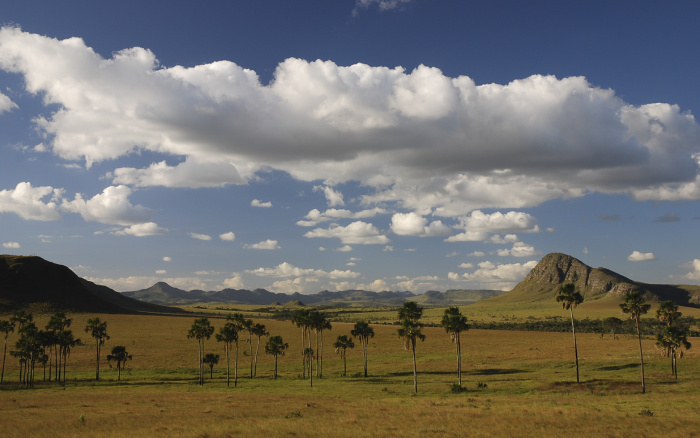Você está na versão anterior do website do ISA
Atenção
Essa é a versão antiga do site do ISA que ficou no ar até março de 2022. As informações institucionais aqui contidas podem estar desatualizadas. Acesse https://www.socioambiental.org para a versão atual.
Unprotected areas for an unprotected humanity
Tuesday, 10 de March de 2020 
Nurit Bensusan, ISA advisor and biodiversity expert
One of the fundamental instruments of the Convention on Biological Diversity (CBD) reveals the nature of humanity itself. The establishment of protected areas is the most popular and the most traditional way to protect biodiversity (see the box below). But what are we protecting biodiversity from? From ourselves, from our species' destructive power... It's unbelievable to be part of a species that recognizes it has to protect nature from itself...
The count of protected areas looks positive. Several have been created in recent decades; however, it hasn't been possible to stop the loss of biodiversity. Why? There are plenty of reasons. One of them is that protected areas, no matter how large, are unable to maintain the biological processes that conserve biodiversity (see the box below). This is because these processes take place on a scale that goes beyond the limits of these areas. The most obvious example is that of animal species that need large territories to survive and reproduce and, today, due to the expansion of cities and agriculture, have lost these areas. The disappearance of some of these species has an impact on the entire ecosystem in which they live.
In other words, it is useless to think of biodiversity as a still photograph of a landscape that needs to be preserved exactly as it is, with those species and those ecosystems. Biodiversity is like a movie, where everything changes all the time: everything changes so biodiversity can live on. In this sense, protected areas, which are often parts of a territory with conserved natural vegetation within an urban or an agricultural area, are unable to fully maintain biodiversity.
Another reason is that more and more protected areas are getting unprotected. It is not easy to keep a part of the territory safe from humanity's predatory power. It takes either a lot of convincing, then translated into benefits for everyone, especially for local populations, or the use of force. In some places, such as in India, the second alternative has been used many times and armed guards have had the unpleasant task of daily defending the protected areas biodiversity from their fellow citizens' harmful actions. It is not the same, of course, of having to use the force on an exceptional basis to remove invaders and squatters from within those areas.
Dialogue and community involvement
In Brazil, the focus was on dialogue and the involvement of local communities in the management of protected areas, especially over the last two decades. It seemed like a promising path, but a lot of energy was still spent on curbing the entry of invaders and barring, in the federal and state Legislative Power, initiatives that aimed to reduce or reclassify protected areas, thus restricting their protection status.
Under Bolsonaro, protected areas have become even more unprotected. Dialogue initiatives are being emptied and actions to maintain the integrity of these areas, both conservation units and indigenous lands, are becoming increasingly rare, reinforcing the narrative that they are open to illegal invaders, gold miners, land grabbers and loggers. In the National Congress, there has been a considerable increase in the number of proposals to reduce the limits of conservation units, to prevent the creation of new areas and to restrict the protection of the existing ones.
The countdown is essential: there is no point in having a collection of unprotected protected areas because, besides not fulfilling their role of maintaining biodiversity, in the end, it makes us all unprotected too. Our chances, as a species, to ensure quality of life for all of humanity are rapidly decreasing. Protected areas, by preserving biodiversity, safeguard an important set of ecosystem services, such as water quality and availability, soil fertility, pest and disease control, the presence of pollinators and the expansion of alternatives for mitigation and adaptation to climate change. Without these services, life becomes more difficult for some and impossible for most.
Post-2020 agenda in check
At this moment, nine months from the 15th Conference of the Parties to the Convention on Biological Diversity (COP 15), one of its preparatory meetings to establish the goals of the biodiversity agenda for after 2020 is taking place in Rome, Italy. New targets are being negotiated for protected areas. It is essential that ways to maintain the integrity of these areas, as well as the biological processes that preserve biodiversity, be constituent elements of these goals.
The meeting would be held in China, but it was moved to Rome because of the novel coronavirus outbreak, and now it is being emptied, also due to the participants' fear of the new virus.
As a consequence, the discussion of the first draft of the post-2020 biodiversity agenda (also known as zero draft) is likely to be compromised.
Perhaps, though, this is a good opportunity for the Brazilian government to rethink its positions. So far, the country has been identified in the negotiations as one that tries to block any advance in the biodiversity agenda, causing outrage and doubt abroad and humiliating the rightfully recognized Brazilian diplomacy.
It is a countdown, we have nine months to ponder the future of humanity. If, in nine months, it is possible to give birth to a new life, there may be time for the current Brazilian government to understand that there will be no life without biodiversity and that there will be no post-2020 biodiversity agenda without Brazil, the nation with the largest number of species on the planet.
Stay up-to-date
What is biodiversity?
Biological diversity, or biodiversity, is the variability among living organisms from all sources, including, inter alia, terrestrial, marine, other aquatic ecosystems and the ecological complexes of which they are part. It also includes the diversity within species, between species and that of ecosystems. Brazil is the nation with the greatest biodiversity in the world.
What is the Biodiversity Convention (CBD)?
Signed at Eco-92, the Biodiversity Convention (CBD) is an international multilateral treaty ratified by more than 180 countries. Brazil ratified the CDB in 1994 and, from then on, the convention became part of its legislation. It has a set of articles that provide guidelines for national public policies, for instruments for the conservation and sustainable use of biodiversity and for the implementation of mechanisms, for all sectors of society, to protect biodiversity and ecosystem services. One of the documents signed by Brazil under the convention (the Cartagena Protocol on Biosafety) has the force of law. The convention has three main objectives: to conserve biodiversity, to promote its sustainable use and to share the benefits derived from that use. The CBD created a set of targets to be achieved by the participating countries for the past decade and for this one on different topics. Although the CDB is 28 years old, its results are limited and it has not been able to stop the loss of biodiversity that is already reaching worrying levels, a situation aggravated by the climate crisis. At this conference in 2020, new goals for the next decade will be established.
What are protected areas?
According to the Convention on Biodiversity (CBD), a protected area is a geographically defined area that is designed, or regulated, and managed to achieve specific conservation objectives. In Brazil, according to the National Strategic Plan for Protected Areas (PNAP, Decree n. 5,758/2006), Conservation Units, Indigenous Lands, Quilombola (maroon people) Territories, Legal Reserves and Permanent Preservation Areas are classified as such. The last two are areas for conservation in private possessions and properties provided for by the Forest Code (Law n. 12,651/2012).
What are biological processes?
Biological processes are those responsible for generating and maintaining the diversity of life on Earth. They include ecological processes that take place among species - such as reproduction, feeding, predation, distribution and competition - and those that occur within ecosystems, such as plant community’s formation, population dynamics and interactions with the physical environment. Evolutionary processes, which take place over a longer time scale and which lead to changes in species, in their interactions and in ecosystems, are also biological processes.
Imagens:



